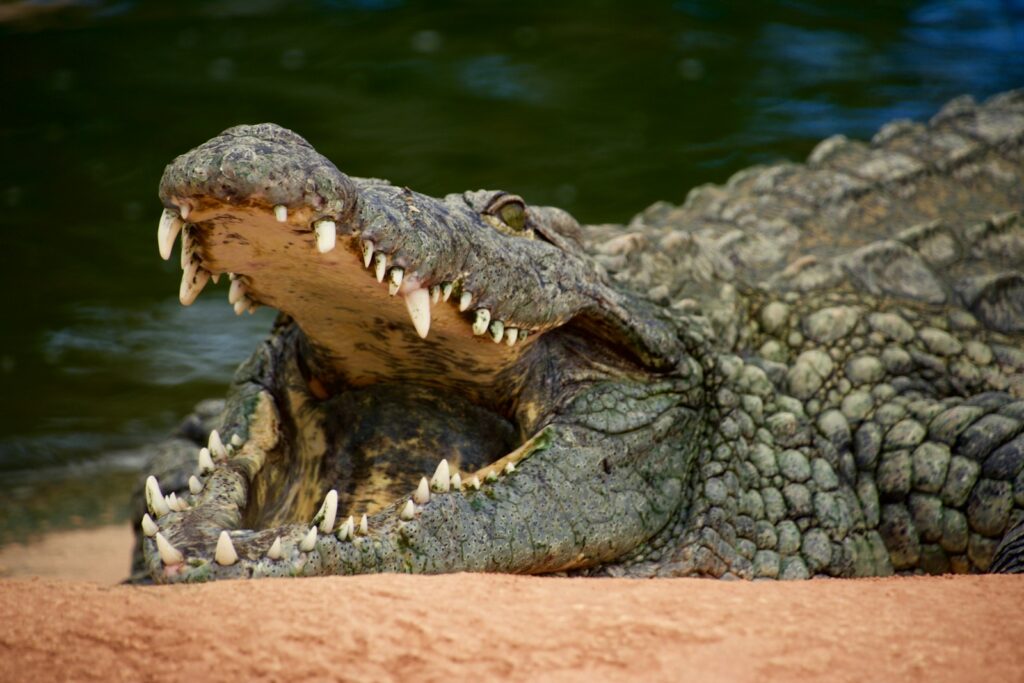Approximately 66 million years ago, a catastrophic event reshaped Earth’s biological landscape forever. The Cretaceous-Paleogene extinction event wiped out approximately 75% of all species, including the non-avian dinosaurs that had dominated terrestrial ecosystems for over 160 million years. Yet remarkably, crocodilians—the group including crocodiles and alligators—survived this mass extinction and continue to thrive today, virtually unchanged in their fundamental design for over 200 million years. This stark contrast in evolutionary trajectories raises fascinating questions about survival, adaptation, and the unpredictable nature of extinction events. How did crocodilians endure while their dinosaur relatives perished? What unique characteristics or circumstances allowed one lineage to persist while the other vanished? This exploration reveals important insights not just into prehistoric life, but also about resilience and vulnerability in the face of environmental catastrophe.
The Shared Ancestry: Closer Than You Might Think
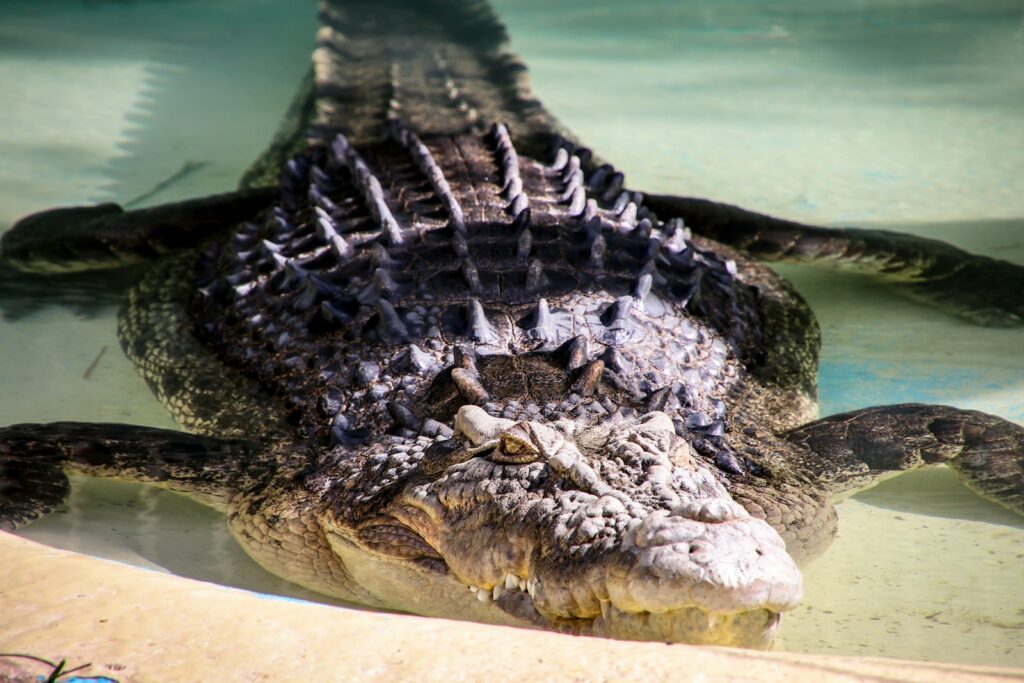
Crocodiles and dinosaurs share a deeper connection than most people realize, both belonging to the group Archosauria, which emerged approximately 250 million years ago. This relationship makes crocodiles more closely related to birds (the surviving dinosaur lineage) than they are to other reptiles like lizards and snakes. The archosaur lineage split into two main branches: the Pseudosuchia (crocodile line) and the Avemetatarsalia (dinosaur and pterosaur line). During the Triassic period, both groups flourished and diversified, producing a remarkable array of body forms and ecological adaptations. This shared heritage explains certain similarities between crocodilians and dinosaurs, including their four-chambered hearts, complex respiratory systems, and parental care behaviors—traits that distinguish them from other reptile groups. Understanding this evolutionary relationship provides essential context for examining why one branch survived while the other largely perished.
The Rise of Dinosaur Dominance
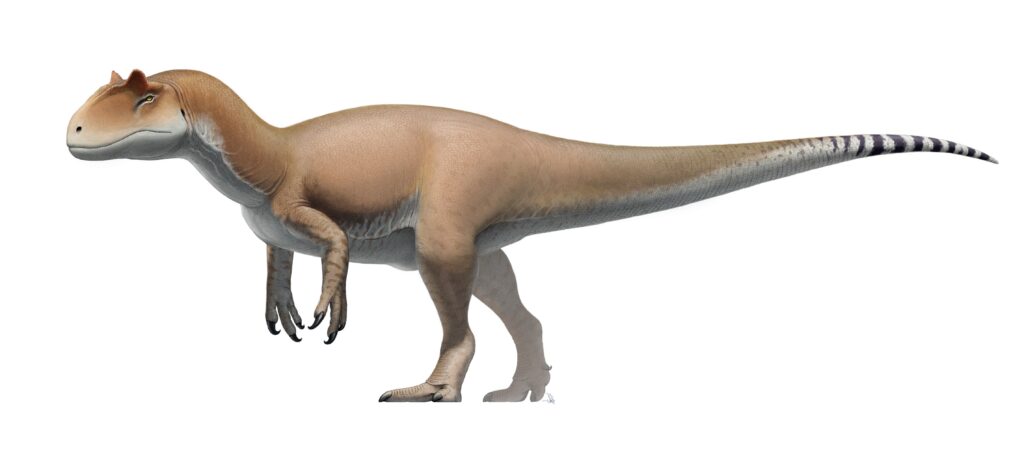
Dinosaurs emerged during the Late Triassic period, around 230 million years ago, but they didn’t immediately dominate Earth’s ecosystems. The early Triassic landscape featured diverse crocodile relatives that competed directly with early dinosaurs for resources and ecological niches. By the Early Jurassic period, however, dinosaurs began their ascent to ecological dominance, diversifying explosively into numerous species occupying virtually every terrestrial habitat. This transition was likely facilitated by a combination of evolutionary innovations, including upright posture, specialized respiration, and efficient thermoregulation. As dinosaurs flourished, most crocodile relatives became increasingly restricted to aquatic and semi-aquatic habitats, a pattern of niche partitioning that would prove critically important during later extinction events. The diversification of dinosaurs during this period was truly remarkable, eventually producing the iconic groups we recognize today: enormous sauropods, armored stegosaurs and ankylosaurs, horned ceratopsians, and the fearsome theropods.
Asteroid Impact: The Great Equalizer
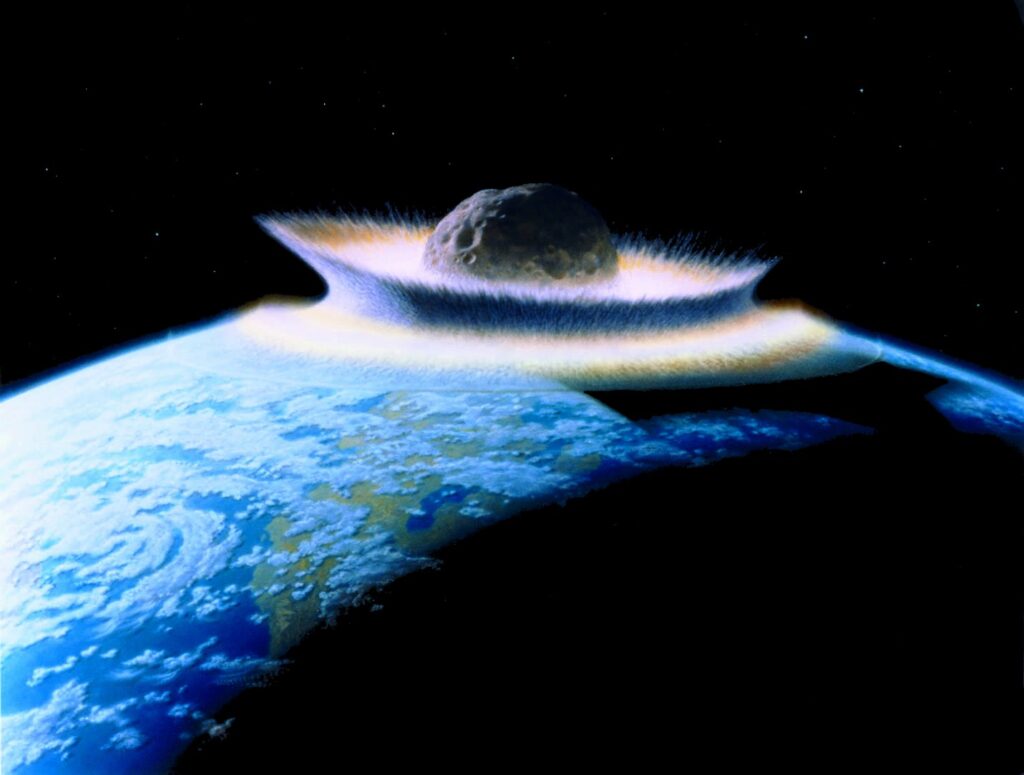
The Chicxulub impactor, a massive asteroid or comet approximately 10-15 kilometers in diameter, struck Earth’s Yucatán Peninsula with devastating consequences about 66 million years ago. This cosmic collision unleashed energy equivalent to billions of atomic bombs, triggering tsunamis, earthquakes, and widespread wildfires. More significantly, it ejected massive quantities of dust and aerosols into the atmosphere, blocking sunlight and dramatically cooling global temperatures for years or possibly decades. This “impact winter” devastated ecosystems worldwide by disrupting photosynthesis and collapsing food chains from the bottom up. The immediate aftermath was characterized by acid rain, global firestorms, and dramatically altered atmospheric chemistry. Geological evidence for this catastrophe is preserved in a distinctive layer of sediment enriched in iridium—an element rare on Earth but common in asteroids—found worldwide at the Cretaceous-Paleogene boundary. This single event fundamentally altered Earth’s evolutionary trajectory, eliminating ecological dominants and creating opportunities for surviving lineages.
Size Matters: The Disadvantage of Being Big

The non-avian dinosaurs’ large body size, which had been advantageous for millions of years, became a critical liability during the mass extinction. Larger animals generally require more food to sustain their metabolic needs, making them particularly vulnerable when food resources become scarce. Most adult dinosaurs weighed hundreds or thousands of kilograms, necessitating constant and substantial caloric intake that became impossible to maintain during the post-impact ecological collapse. Crocodilians, by contrast, included many smaller-bodied species with significantly lower food requirements. Additionally, larger animals typically have longer generation times and produce fewer offspring, hampering their ability to adapt to rapidly changing conditions through natural selection. The fossil record indicates a size-biased extinction pattern, with virtually no terrestrial vertebrates weighing more than 25 kilograms surviving the extinction event. While some crocodilian species were quite large, many others were relatively small, providing the lineage with a crucial advantage during this period of resource scarcity.
Metabolic Advantages: The Efficiency of Being Cold-Blooded
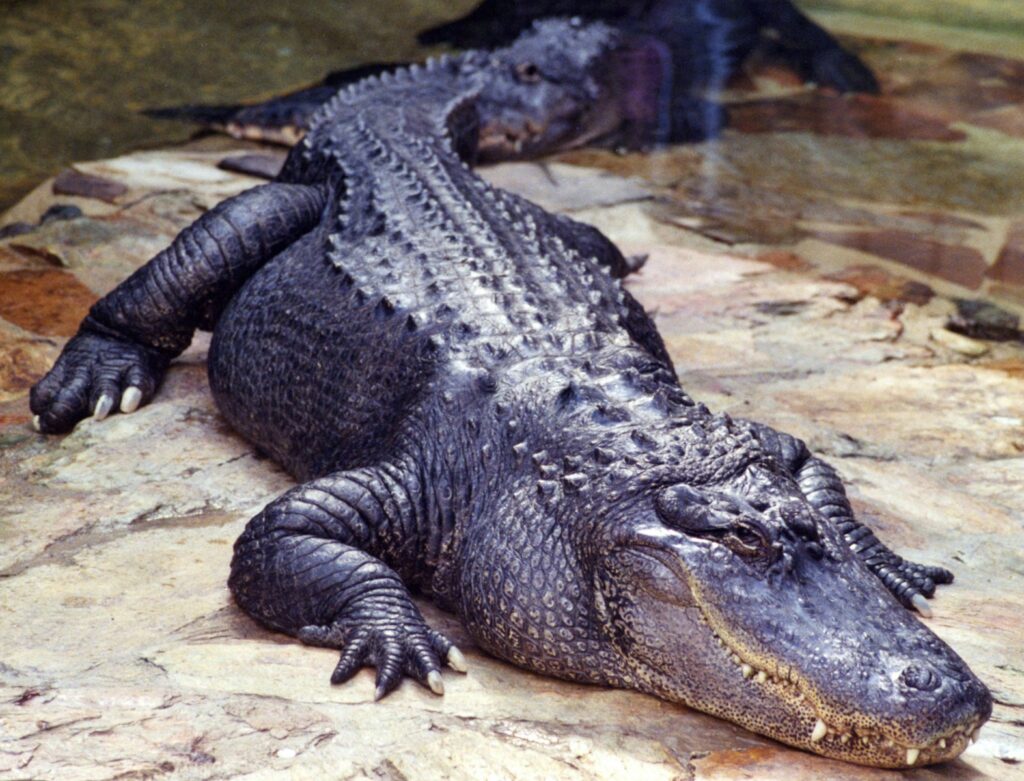
The contrasting metabolic strategies of dinosaurs and crocodilians proved decisive during the post-impact period of resource scarcity. Evidence strongly suggests that most dinosaurs maintained high metabolic rates similar to modern birds and mammals, requiring constant food intake to maintain body temperature and support energetic activities. Crocodilians, conversely, employ ectothermic (cold-blooded) metabolism, allowing them to survive on far less food by dramatically lowering their metabolic rate during periods of scarcity. A modern crocodile can survive for more than a year without eating by entering a state of metabolic dormancy—an extraordinary adaptation that would have been invaluable during the post-impact period. Additionally, crocodilians possess remarkable stamina for anaerobic activity, allowing them to function in low-oxygen environments that would challenge more metabolically demanding animals. This metabolic flexibility represents one of the most significant advantages crocodilians possessed over their dinosaur relatives when facing catastrophic environmental conditions.
Aquatic Adaptation: Watery Refuges During Crisis

The semi-aquatic lifestyle of crocodilians provided critical advantages during the extinction event that eliminated most terrestrial species. Aquatic environments generally experience less temperature fluctuation than land habitats due to water’s high specific heat capacity, potentially buffering aquatic organisms from the extreme temperature changes that followed the asteroid impact. Furthermore, aquatic food webs are often partially supported by detritus (dead organic material), which would have remained available even after the collapse of photosynthesis-based food chains. Crocodilians’ ability to remain submerged for extended periods may have protected them from the immediate effects of impact-generated wildfires, acid rain, and extreme atmospheric conditions. Fossil evidence indicates that freshwater ecosystems were generally less affected by the extinction event than terrestrial or marine environments, with many freshwater species showing much higher survival rates. The ancestors of modern crocodilians had already adapted to semi-aquatic niches tens of millions of years before the extinction, positioning them perfectly to weather the catastrophe in these relatively protected environments.
Dietary Flexibility: Eating Anything When Times Are Tough

Modern crocodilians are renowned for their dietary flexibility, a trait that undoubtedly contributed to their ancestors’ survival during the mass extinction. Unlike many dinosaur groups that had evolved highly specialized feeding adaptations—whether for stripping vegetation, crushing shells, or slicing meat—crocodilians maintained generalist feeding capabilities that allowed them to exploit virtually any available food source. Modern crocodiles are opportunistic predators that consume fish, mammals, birds, reptiles, and even carrion when necessary. They can also employ different hunting strategies, from ambush predation to active pursuit, depending on prey availability and environmental conditions. Their powerful digestive systems, featuring strong stomach acid that can break down bones, shells, and even hooves, allow them to extract nutrients from nearly any organic material. This dietary flexibility would have been invaluable during the resource-limited post-impact environment, enabling crocodilians to subsist on whatever meager food sources remained available while more specialized feeders perished.
Reproductive Strategies: Hedging Evolutionary Bets

The reproductive biology of crocodilians provided crucial advantages for surviving through the extinction bottleneck. Female crocodilians lay numerous eggs (typically 20-60) in each clutch and can reproduce annually throughout their long reproductive lives, potentially producing thousands of offspring over decades. This high reproductive output increases the probability that at least some offspring will possess genetic variations advantageous for survival during changing conditions. Additionally, many crocodilian species employ temperature-dependent sex determination, where incubation temperature influences the sex ratio of hatchlings—a mechanism that can potentially help populations respond to climate fluctuations by adjusting sex ratios. Their eggs are typically buried in vegetation mounds or soil, which may have provided insulation against temperature extremes following the impact. Furthermore, hatchling crocodilians are immediately independent, requiring no parental provisioning beyond nest guarding, allowing reproductive adults to conserve energy during resource-scarce periods. These reproductive adaptations likely gave crocodilians significant advantages over dinosaur groups with more specialized or resource-intensive reproduction.
Behavioral Adaptations: Masters of Inactivity

Crocodilians’ behavioral adaptations, particularly their capacity for extended inactivity, represented another survival advantage during the extinction crisis. Modern crocodilians can remain motionless for hours or days while hunting, conserving energy and reducing metabolic demands. They’re capable of entering dormant states during adverse environmental conditions, such as drought or extreme temperatures, dramatically reducing their physiological needs. This behavioral plasticity contrasts with evidence suggesting many dinosaur groups maintained high activity levels requiring constant energy input. Crocodilians also practice burrowing behavior, with several species creating tunnel systems that provide refuge from extreme temperatures and environmental stressors. Archaeological evidence suggests that similar burrowing behaviors existed in ancient crocodilians, potentially providing crucial shelter during the immediate post-impact period characterized by wildfires and extreme temperature fluctuations. These behavioral adaptations, coupled with their physiological capabilities, allowed crocodilians to effectively “wait out” the worst environmental conditions following the impact event.
The Survivors: Not All Crocodilians Made It

While modern crocodilians represent a success story of evolutionary endurance, it’s important to recognize that numerous crocodiliform lineages did perish during the extinction event. The Cretaceous period hosted a diverse array of crocodile relatives, including fully terrestrial forms, specialized fish-eaters with elongated snouts, and even herbivorous species with complex teeth for processing plant material. The fossil record indicates that these more specialized crocodiliform groups largely disappeared alongside the dinosaurs, sharing similar vulnerabilities due to their specialized adaptations. The survivors primarily belonged to the crown group Crocodylia, which had already evolved the semi-aquatic, generalist lifestyle characteristic of modern forms. Even within this group, the extinction event caused a severe bottleneck, dramatically reducing diversity and eliminating many species. The crocodilians that survived into the Paleogene period represented only a small fraction of their former diversity, suggesting their survival was tenuous rather than assured. This pattern underscores that survival through mass extinctions often depends more on possessing the right combination of adaptations than on taxonomic affiliation.
Birds: The Dinosaurs That Did Survive

The traditional narrative of dinosaur extinction requires an important qualification: Birds are living dinosaurs, having evolved from small, feathered theropod ancestors during the Jurassic period. Their survival through the extinction event demonstrates that certain dinosaurian adaptations did prove advantageous. Early birds shared several characteristics with crocodilians that likely facilitated their survival, including relatively small body size, dietary flexibility, and potentially lower metabolic requirements than their larger dinosaurian relatives. The avian lineage that survived the extinction appears to have been predominantly ground-dwelling, seed-eating birds that could subsist on dormant plant seeds during the period when living vegetation was scarce. Their ability to fly may have enabled them to escape localized disasters and exploit scattered resources across wide areas. Interestingly, evidence suggests that the most specialized bird groups of the late Cretaceous, such as the toothed marine Hesperornithiformes and the primitive Enantiornithes, did not survive the extinction event. The pattern of bird survival thus parallels that of crocodilians, with generalists persisting while specialists perished.
Evolutionary Stasis: Why Crocodiles Haven’t Changed

One of the most remarkable aspects of crocodilian evolution is their morphological conservatism—modern forms closely resemble their ancestors from over 80 million years ago. This evolutionary stasis contrasts sharply with the rapid diversification of surviving birds following the extinction. Crocodilians’ unchanging form likely reflects the exceptional effectiveness of their body plan for their semi-aquatic, predatory lifestyle rather than an inability to evolve. Their core adaptations—powerful jaws, armored bodies, laterally compressed tails, and webbed feet—represent a highly optimized solution for their ecological niche, with few selective pressures favoring significant modification. Additionally, crocodilians’ relatively slow reproductive rate, long generation time, and low metabolic rate may contribute to slower evolutionary change compared to more rapidly reproducing organisms. Genetic studies confirm that crocodilians do indeed have lower mutation rates than birds or mammals, providing a molecular basis for their morphological conservatism. This evolutionary stability represents not a failure to adapt but rather evidence of a supremely successful body plan that has weathered multiple extinction events and continued to thrive across geological epochs.
Lessons for the Anthropocene Extinction

The contrasting fates of dinosaurs and crocodilians during the end-Cretaceous extinction offer valuable insights for understanding vulnerabilities during the current biodiversity crisis. Specialists with narrow ecological requirements—like many dinosaur groups—face greater extinction risk than generalists when environments change rapidly. Large-bodied species with high resource requirements and slow reproductive rates are particularly vulnerable, mirroring concerns for many endangered megafauna today. The disproportionate survival of semi-aquatic organisms during the end-Cretaceous event parallels current patterns, where freshwater and marine ecosystems face severe threats but may potentially offer refuge for certain adaptable species. Perhaps most importantly, the fossil record demonstrates that even groups with extraordinary evolutionary success and ecological dominance can vanish rapidly when environmental changes exceed their adaptive capacity. The dinosaurs’ 160-million-year reign ended abruptly when conditions changed beyond their ability to respond, a sobering reminder that no species, including humans, is immune to extinction when environmental conditions shift dramatically. The resilience of crocodilians offers hope that adaptable species can endure through catastrophic change, but only if they possess the right combination of traits when crisis strikes.
Conclusion

The tale of crocodilians and dinosaurs represents one of evolution’s most fascinating case studies in survival and extinction. Both lineages faced identical environmental catastrophes, yet their divergent adaptations led to dramatically different outcomes. Crocodilians’ combination of semi-aquatic lifestyle, metabolic efficiency, dietary flexibility, and reproductive strategy provided crucial advantages during the post-impact crisis. Meanwhile, most dinosaurs’ large size, high metabolic demands, and specialized adaptations became liabilities. This evolutionary saga reminds us that survival often depends not on superiority in stable times but on possessing adaptations that become advantageous during periods of extreme environmental stress. The crocodilians that bask along tropical riverbanks today represent living testimony to the unpredictable nature of extinction events and the often counterintuitive patterns of evolutionary survivorship. Their success stands as a 66-million-year testament to the value of adaptability, efficiency, and resilience in the face of catastrophic change.

